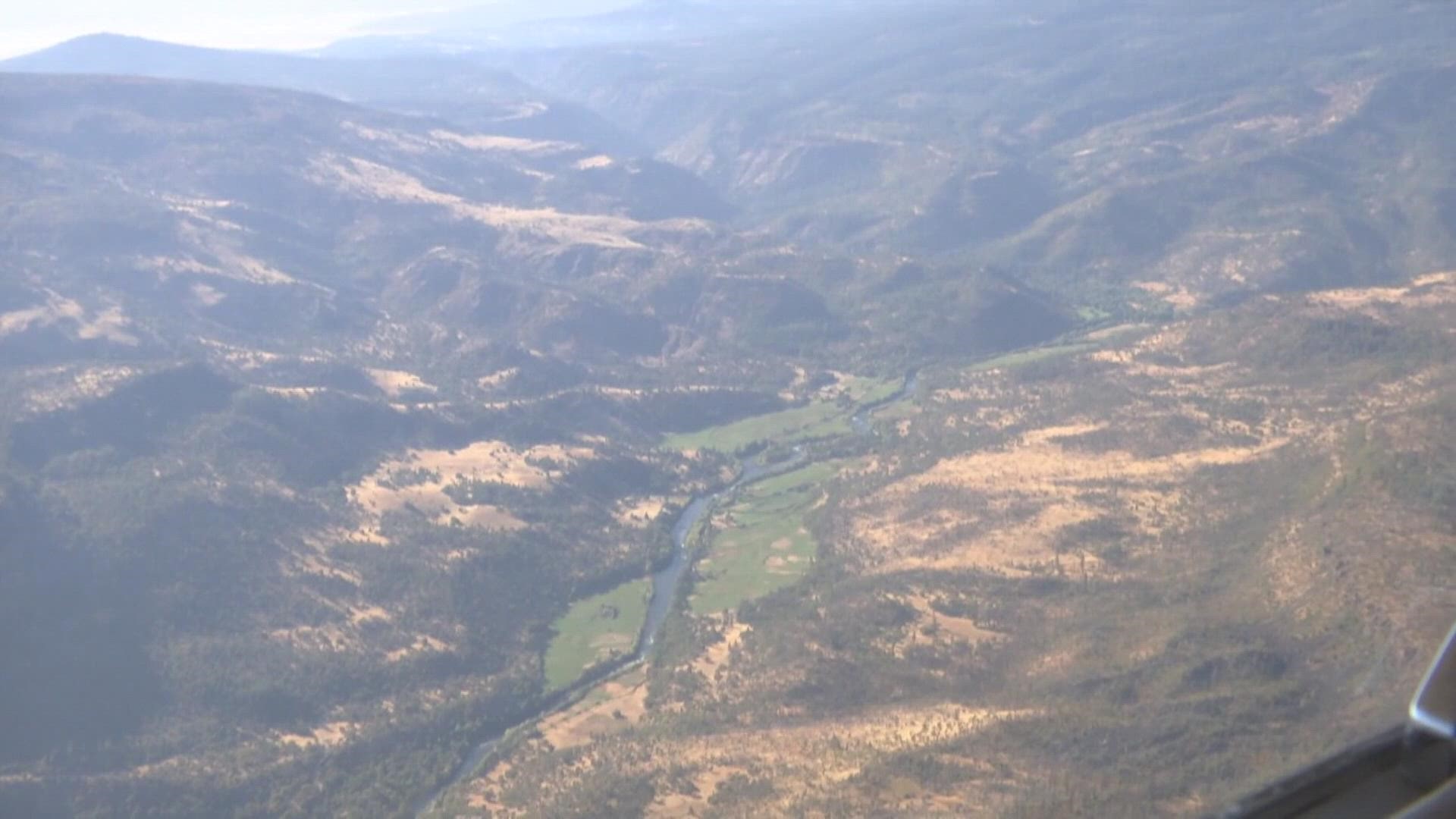OREGON, USA — Leaders from tribal nations, along with representatives from state and federal government, celebrated the recent decision to remove four dams along the Klamath River at a press conference on Thursday.
Joe James, chairman of the Yurok tribal council, said the day was momentous and one that would be remembered for generations.
“It's a time in history that people will look back and say, Oregon, California, two governors and tribal leaders answered the bell and paved the way,” he said. “This is how things get done.”
James was flanked by Oregon Gov. Kate Brown, California Gov. Gavin Newsom and Secretary of the Interior Deb Haaland. Brown who is nearing the end of her term in office, couldn’t help but reflect on the extraordinary efforts it took to get the dam removal project. The largest in U.S. history, approved by federal regulators.
“It has taken nearly my entire tenure as governor, but finally we can say with certainty that these dams are coming down,” Brown said. “And it's about damn time.”
The restoration project will open up roughly 400 miles of salmon spawning habitat that was previously cut off by the dams.
Haaland also used the press conference as an opportunity to announce a new round of funding for other river restoration projects in the region, all of which will be led by tribal nations.
Haaland said the Bureau of Reclamation would award nearly $6 million to the Klamath, Yurok, Karuk and Hoopa Valley tribes “to restore aquatic ecosystems, improve the resilience of habitats and mitigate the effects of the ongoing drought crisis.”
Pacificorp, which owns and operates the dams, said they produce less than 2% of the company’s electricity which can be easily replaced by other sources, but not everyone who lives along the river is excited about the removal.
Some customers have expressed concern regarding their rates potentially going up if the project hits cost overruns and people with waterfront property along the reservoirs behind the dams have voiced concerns about their property values falling.
James saw the forthcoming removal process as a victory that will be enjoyed for generations to come.
“Our children will get to be able to walk the riverbanks post-dam removal,” he said. “We’ll tell them the history and the hard work that got us to this point.”

